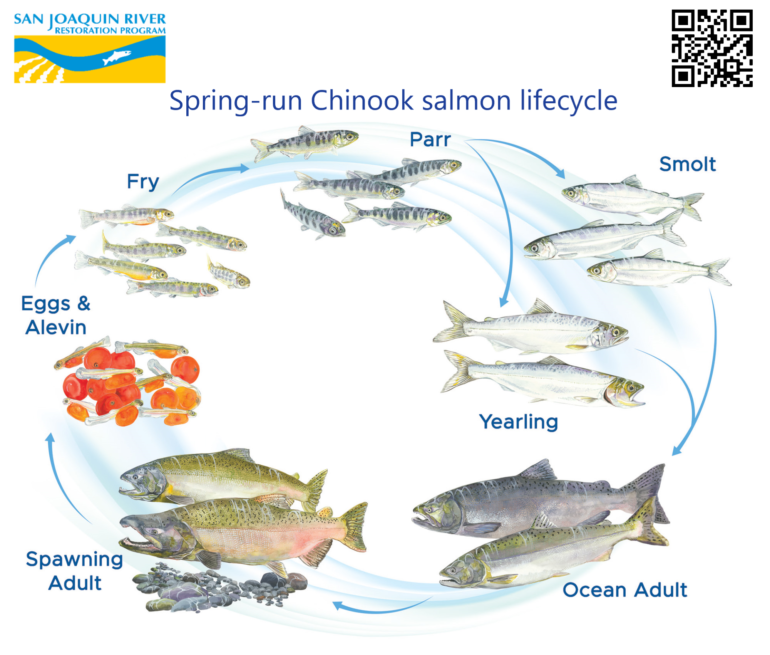The Program has reintroduction activities for both juvenile and adults spring-run Chinook salmon — the species of focus for the Program and listed as Threatened under the Endangered Species Act.
San Joaquin River spring-run Chinook salmon evolved to live in both fresh and salt water environments. Hatched from an egg in rivers, streams and creeks, they advance as fry, parr, and eventually juveniles, rearing and growing larger, until they emigrate to the cooler tidal water of the Sacramento-San Joaquin Delta and to the Pacific. Some of the generation hold back and stay in the freshwater systems for an additional year – known as “yearlings” – when they migrate to ocean the following year. This is thought to be a resiliency life history strategy in response to environmental conditions, such as drought. Once the juveniles (or yearlings) migrate to the ocean, the mature into adults before migrating back to their natal stream, where they spawn and die, completing their lifecycle. Spring-run are unique from other runs of salmon in that adults typically arrive in early spring (April), hold all summer in the upper flows while not eating, before spawning in late fall (Sept. – Oct.) and dying. Below is a look at their lifecycle:

Coordination for fish reintroduction efforts takes place through the Fisheries Management Work Group. A consortium of Implementing Agency staff, the group is responsible for planning and coordinating to implement the fisheries components of the Restoration Goal. Actions include assisting with broodstock collection and monitoring of potential donor populations; providing input and guidance for fisheries studies, including passage assessments; providing input and guidance for the operation of the Hills Ferry Barrier, flow scheduling and water temperature management; document preparation and submission; and technical input to various Program efforts.
The Fisheries Reintroduction and Restoration Team works closely with the Fisheries Management Work Group in coordinating and completing any permitting requirements to implement the fisheries reintroduction portion of the Settlement and associated studies. It is responsible for planning and coordination of regulatory documents and activities associated with reintroduction of fish into the San Joaquin River through the SJRRP. The members include National Oceanic and Atmospheric Administration Fisheries, California Department of Fish & Wildlife, the US Fish & Wildlife Service, and Reclamation.
Click here to learn more about our adult fish. Click here to learn about our juvenile reintroduction efforts.

